Datasets
- ActEV-supported data sets
- Multiview Extended Video with Activities (MEVA) See the License and the README for context.
- VIRAT
- Data access from mevadata.org: Accessing and using MEVA and MEVA Download Instructions
- Data access from git and NIST : See actev-data-repo. Access credentials provided during signup
- Kinetics
- AVA
- Moments-in-Time
- ActivityNet
- NVIDIA's CityFlow dataset
Framework
The DIVA Framework is a software framework designed to provide an architecture and a set of software modules which will facilitate the development of activity recognition analytics. The Framework is developed as a fully open source project on GitHub. The following links will help you get started with the framework:- DIVA Framework Github Repository This is the main DIVA Framework site, all development of the framework happens here.
- DIVA Framework Issue Tracker Submit any bug reports or feature requests for the framework here.
- DIVA Framework Main Documentation PageThe source for the framework documentation is maintained in the Github repository using Sphinx. A built version is maintained on ReadTheDocs at this link. A good place to get started in the documentation, after reading the Introduction is the UseCase section which will walk you though a number of typical use cases with the framework.
- KWIVER Github Repository This is the main KWIVER site, all development of the framework happens here.
- KWIVER Issue Tracker Submit any bug reports or feature requests for the KWIVER here. If there's any question about whether your issues belongs in the KWIVER or DIVA framework issues tracker, submit to the DIVA tracker and we'll sort it out..
- KWIVER Main Documentation PageThe source for the KWIVER documentation is maintained in the Github repository using Sphinx. A built version is maintained on ReadTheDocs at this link. A good place to get started in the documentation, after reading the Introduction are the Arrows and Sprokit sections, both of which are used by the KWIVER framework.
Baseline Algorithms
KITWARE has adapted two "baseline" activity recognition algorithms to work within the DIVA Framework:Annotation Tools
- Kitware annotation tool (the tool natively supports the DIVA format)
- The VGG Image Annotator
- Scalabel (used for annotation of Berkeley DeepDrive project)
- VATIC - Video Annotation Tool
- BeaverDam
- VoTT: Visual Object Tagging Tool
- Computer Vision Annotation Tool (CVAT)
- Efficient Annotation of Segmentation Datasets with Polygon-RNN++
For information on data, evaluation code, etc., please email: actev-nist@nist.gov
For ActEV evaluation discussion, please visit our Google Group: https://groups.google.com/a/list.nist.gov/forum/#!forum/trecvid.actev
An ActEV
- Activity Name - A mnemonic handle for the activity
- Activity Description - Textual description of the activity
- Begin time rule definition - The specification of what determines the beginning time of the activity
- End time rule definition - The specification of what determines the ending time of the activity
- Required object type list - The list of objects systems are expected to identify for the activity. Note: this aspect of an activity not addressed by ActEV-PC.
For example:
- Description: A person closing the door to a vehicle.
- Start: The event begins 1 s before the door starts to move.
- End: The event ends after the door stops moving. People in cars who close the car door from within is a closing event if you can still see the person within the car. If the person is not visible once they are in the car, then the closing should not be annotated as an event.
- Objects associated with the activity : Person; and Door or Vehicle
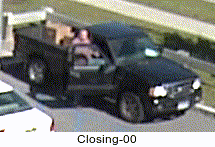


- Description: A vehicle turning left or right is determined from the POV of the driver of the vehicle. The vehicle may not stop for more than 10 s during the turn.
- Start: Annotation begins 1 s before vehicle has noticeably changed direction.
- End: Annotation ends 1 s after the vehicle is no longer changing direction and linear motion has resumed. Note: This event is determined after a reasonable interpretation of the video.
- Objects associated with the activity : Vehicle

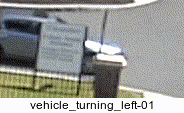
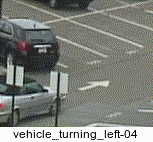
- Description: An object moving from person to vehicle.
- Start: The event begins 2 s before the cargo to be loaded is extended toward the vehicle (i.e., before a person’s posture changes from one of “carrying” to one of “loading”).
- End: The event ends after the cargo is placed into the vehicle and the person-cargo contact is lost. In the event of occlusion, it ends when the loss of contact is visible.
- Objects associated with the activity: Person; and Vehicle
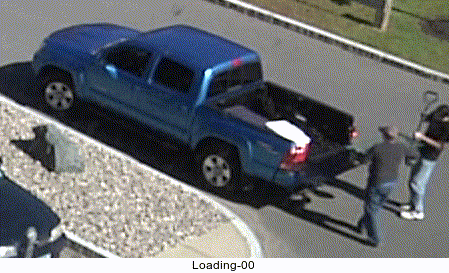
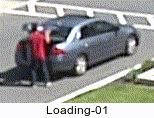

The ActEV evaluation will use the ActEV 2020 Sequestered Data Leaderboard (SDL) activity names for this and all future ActEV evaluations.
The table below provides a list of activities for ActEV
2020 Sequestered Data Leaderboard (SDL), ActEV 2019 Sequestered Data Leaderboard (SDL), and ActEV TRECVID 2019.
| ActEV 2020 SDL Activity Name | ActEV 2019 SDL Activity Name | ActEV TRECVID 2019 |
|---|---|---|
|
person_abandons_package person_closes_facility_door person_closes_trunk person_closes_vehicle_door person_embraces_person person_enters_scene_through_structure person_enters_vehicle person_exits_scene_through_structure person_exits_vehicle hand_interacts_with_person person_carries_heavy_object person_interacts_with_laptop person_loads_vehicle person_transfers_object person_opens_facility_door person_opens_trunk person_opens_vehicle_door person_talks_to_person person_picks_up_object person_purchases person_reads_document person_rides_bicycle person_puts_down_object person_sits_down person_stands_up person_talks_on_phone person_texts_on_phone person_steals_object person_unloads_vehicle vehicle_drops_off_person vehicle_picks_up_person vehicle_reverses vehicle_starts vehicle_stops vehicle_turns_left vehicle_turns_right vehicle_makes_u_turn |
abandon_package person_closes_facility_door Closing_Trunk person_closes_vehicle_door person_person_embrace person_enters_through_structure person_enters_vehicle person_exits_through_structure person_exits_vehicle hand_interaction Transport_HeavyCarry person_laptop_interaction person_loads_vehicle object_transfer person_opens_facility_door Open_Trunk person_opens_vehicle_door Talking person_picks_up_object person_purchasing person_reading_document Riding person_sets_down_object person_sitting_down person_standing_up specialized_talking_phone specialized_texting_phone theft Unloading vehicle_drops_off_person vehicle_picks_up_person vehicle_reversing vehicle_starting vehicle_stopping vehicle_turning_left vehicle_turning_right vehicle_u_turn |
Closing (P, V) or (P) Closing_trunk (P, V) Entering (P, V) or (P) Exiting (P, V) or (P) Loading (P, V) Open_Trunk (P, V) Opening (P, V) or (P) Transport_HeavyCarry (P, V) Unloading (P, V) Vehicle_turning_left (V) Vehicle_turning_right (V) Vehicle_u_turn (V) Interacts (P) Pull (P) Riding (P) Talking (P) activity_carrying (P) specialized_talking_phone (P) specialized_texting_phone (P) |
- March 01, 2020: The ActEV 2020 SDL opens with the expanded MEVA Test3 dataset
- March 01, 2020: ActEV 2020 SDL is a guest task under ActivityNet CVPR'20 ActivityNet workshop
- May 10, 2020 at 12:00 noon EST: Deadline for CLI submissions to be included in ActEV SDL ActivityNet rankings. Top two submissions to be announced on June 1, 2020.
- June 14, 2020: CVPR'20 ActivityNet workshop ActEV SDL guest task presentations
NIST maintains the ActEV Scoring Software on the Scoring software for the Activities in Extended Video (ActEV) evaluation GitHub repo.
| Location | View 1 | View 2 |
|---|---|---|
| Indoor | ||
| Outdoor |
For the Activity Detection task, given a target activity, a system automatically detects and temporally localizes all instances of the activity. For a system-identified activity instance to be evaluated as correct, the type of activity must be correct and the temporal overlap must fall within a minimal requirement.
For the Activity and Object Detection task, given a target activity, a system detects and temporally localizes all instances of the activity and spatially detects/localizes the people and/or objects associated with the target activity. For a system-identified instance to be scored as correct, it must meet the temporal overlap criteria for the AD task and in addition meet the spatial overlap of the identified objects during the activity instance.
For the Activity Object Detection and Tracking task, given a target activity, a system detects and temporally localizes all instances of the activity, spatio-temporally detects/localizes the people and/or objects associated with the target activity, and properly assigns IDs the objects play in the activity. For a system-identified instance to be scored as correct, it must meet the temporal overlap criteria and spatio-temporal overlap of the objects for the AOD task and correctly assign the IDs to the objects as described in the activity definition.